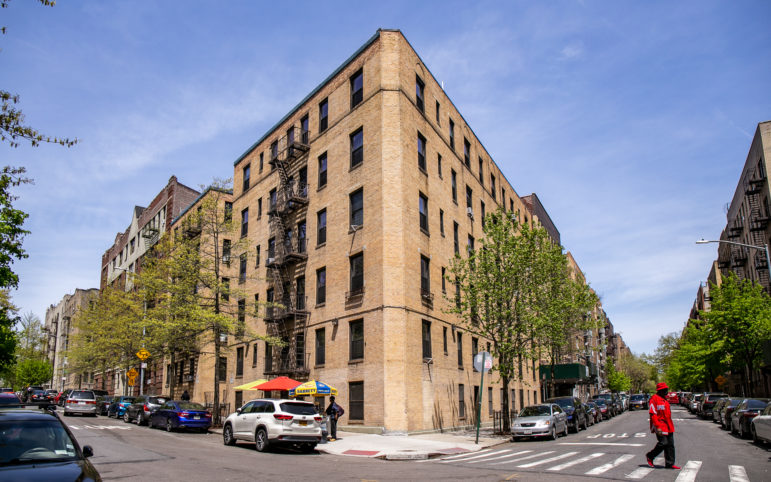“The rent stabilized building bubble will persist as long as there are greater fools to cash out bad bets. If Albany bails out this market now, with bad data and before the market has started to price buildings properly, they risk turning taxpayers into the greatest fools of all.”

Adi Talwar
Apartments in the Bronx.
As the largest lender on New York’s rent stabilized apartment buildings, many analysts and commentators have blamed the collapse of New York Community Bank’s stock over the past few months in part on the Housing Stability and Tenant Protection Act of 2019 (the “HTSPA”), which tightened rent regulations on these buildings that serve as the bedrock of New York’s affordable housing stock.
As a landlord and broker who has been participating in and analyzing the market for rent stabilized buildings for 15 years, I believe that this tempting narrative misdiagnoses the underlying problem and that the market for rent stabilized buildings was in a bubble before the HSTPA, to some degree still is, and the distress we’re seeing was inevitable.
I am speaking out because, as City Limits recently reported, lawmakers in Albany are considering a number of measures that would effectively bail-out rent stabilized landlords and lenders who made bad decisions—and I am concerned that if they do so without taking the time to collect and analyze high quality data and let the market start pricing these buildings properly, they risk stoking the dysfunction that got us into this situation in the first place, all on the public’s dime.
Back in the boom times of the market for rent stabilized buildings there were two prevailing investment strategies. The first was to buy rent stabilized buildings in neighborhoods that were relatively rich and deregulate units in order to capture the neighborhood’s market rents, which were far higher than regulated rents. The second strategy was to buy rent stabilized buildings in relatively poor neighborhoods where market rents weren’t high enough to reach the deregulatory threshold, but where one could still use various means allowed under the pre-HSTPA regime to jack up rents.
The regulatory regime that allowed for deregulating units and aggressively boosting rents in excess of the annual allowances from the Rent Guidelines Board began in 1994, and by the time the HSTPA passed in 2019, the market had practically run out of buildings to execute the first strategy on, leaving the vast majority of the city’s current stock of rent stabilized buildings/units in relatively poor neighborhoods.
Consequently, most distressed rent stabilized buildings are also in these relatively low-income neighborhoods in which the second strategy was executed, so it’s worth asking—did the investments in these buildings that are now going sour even make investment sense to begin with, before the HSTPA tightened rent regulations?
I think to any real estate investor looking at these deals objectively, without ideological blinders on or a compensation structure tied to fees rather than returns, the answer is clearly no, these investments never made sense. The investment yields at which rent stabilized buildings were being purchased and financed were relatively similar regardless of either the potential for increased income from deregulation or the credit quality of their tenants. Rent Stabilized buildings in Mott Haven in the Bronx (median household income of $24,500) were being valued as if they had similar income growth potential and credit risk as rent stabilized buildings in Murray Hill in Manhattan (median household income of $124,740.)
Most new multifamily buildings in relatively poor neighborhoods require subsidies to be able to operate—so why should all these ancient, inefficient, unsubsidized buildings with similar tenants be priced as if they exist in some parallel economic universe?
Given the age and tenant credit quality of these distressed rent stabilized buildings, many of them will have to be bailed out by taxpayers in one form or another eventually in order to avoid falling into serious disrepair. Different parts of the real estate industry are pushing different proposals that, despite their representations to the contrary, would have public money prop up these buildings either directly or indirectly.
One proposal would have the regulated rents on vacant units reset to U.S. Department of Housing and Urban Development’s standards and paid by vouchers in exchange for renovations, which could sometimes result in the public subsidizing higher rents than what the market would otherwise bear. Another proposal would increase the ability of landlords to recapture renovation costs via rent increases, which, if not designed properly, could risk incentivizing, among other things, over-improvement of units to the point of their rents only being affordable to tenants via increased public assistance.
The tenant movement, for its part, has proposed, among other things, a whole new public authority that, in addition to building new social housing, would be able to buy distressed buildings like these using public funding.
While all of these potential solutions have some merit, they are being considered by lawmakers without high-quality data on market, building, or unit-level distress. Different housing agencies can’t even agree on how many vacant rent stabilized apartments there are. The court system, which is a venue for a lot of the building-level distress, theoretically has lots of useful data on what has befallen these buildings but is notoriously opaque.
In addition to having a responsibility to deal with the other more urgent and fundamental housing items on their legislative agenda, given that only so much government money is going to be appropriated for housing, lawmakers also have a responsibility to make sure taxpayers get as much bang for our buck as possible by investing it on an informed basis and not on above-market terms.
The rent stabilized building bubble will persist as long as there are greater fools to cash out bad bets. If Albany bails out this market now, with bad data and before the market has started to price buildings properly, they risk turning taxpayers into the greatest fools of all.
Ben Carlos Thypin is the CEO of Quantierra.




